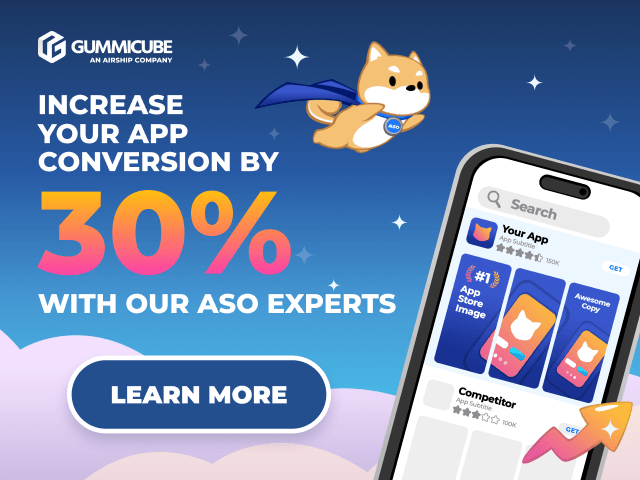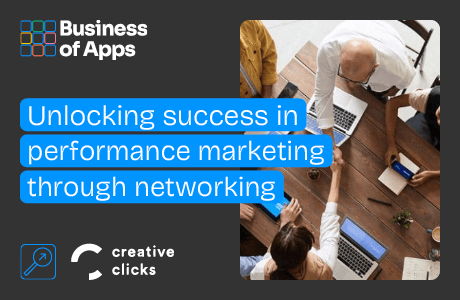As the digital landscape evolves, privacy has become a paramount concern for consumers and regulators alike. For mobile user acquisition (UA) specialists, adapting to a privacy-first environment is not just a challenge but an opportunity to innovate. Content, often hailed as king, remains central to effective mobile advertising.
Maximizing creative content can yield substantial returns on investment (ROI) in direct-response mobile advertising. In this article, we explore best practices for optimizing content in a privacy-first world and share insights from our company’s expertise.
The importance of creative content in mobile UA
Creative content is the cornerstone of any successful mobile UA strategy. It captures attention, engages users, and drives conversions. In a privacy-first future, where traditional tracking methods may be limited, the quality and relevance of your content become even more critical.
Best practices for maximizing creative content
🎯 Personalization without invasiveness
In a privacy-first world, respecting user data is essential. Personalization should focus on contextual relevance rather than personal data. For instance, using location-based content that doesn’t require GPS tracking can create a personalized experience without infringing on privacy.
For example, a QSR app can offer promotions based on the time of day, such as breakfast deals in the morning, without needing to know the user’s exact location.
According to our media buying team, one successful campaign involved a fitness app that offered workout suggestions based on the time of day, resulting in a 20% increase in user engagement without needing personal data.
🔄 Strong and clear CTAs
Your call-to-action (CTA) is a pivotal element of your content. It directs users towards the desired action, whether it’s downloading an app, making a purchase, or signing up for a newsletter. A strong CTA should be clear, compelling, and contextually relevant.
For example, we observed a significant increase in conversion rates by changing our CTA from “Download Now” to “Get Your Free App Today.” This small tweak made the offer more enticing and urgent.
Our media buying team shared that by changing a CTA from “Join Us” to “Start Your Free Trial Today,” a client saw a 35% boost in conversion rates. This change highlighted the immediate benefit to the user, making it more compelling.
📊 A/B testing creative elements
A/B testing allows you to compare different versions of your creative content to see which performs better. This can include testing headlines, images, CTAs, and more. Regularly testing and iterating on your creative elements ensures that you are always using the most effective content.
For instance, in one campaign, we tested two versions of a video ad. Version A featured a humorous approach, while Version B was more informational. The humorous ad outperformed the informational one by 30% in terms of engagement.
Our media buying team noted that in a recent campaign for a travel app, testing different headlines resulted in a 40% higher click-through rate when the headline focused on “Exclusive Deals” versus “Best Travel App.” This insight was used to refine future content strategies.
🚀 Leveraging user-generated content
User-generated content (UGC) can be a powerful tool in your UA strategy. UGC adds authenticity to your campaigns and can be highly engaging. Encouraging satisfied users to share their experiences can create a sense of community and trust.
For example, we ran a contest encouraging users to share their experiences with our app on social media. The best entries were featured in our ads, resulting in a 25% increase in user engagement.
The media buying team highlighted a campaign where incorporating UGC from social media posts into ads increased engagement by 50%. Users responded positively to seeing real-life examples and testimonials from other customers.
Insights from our media buying team
Our media buying team shared several key insights that have significantly impacted our mobile UA strategies:
- Examples of successful campaigns: One notable campaign involved a health app that personalized content based on general user behavior rather than personal data. By focusing on morning routines and evening relaxation tips, the app saw a 25% increase in engagement.
- CTA optimization: Changing the CTA to focus on immediate benefits has consistently shown better results. For example, switching from “Learn More” to “Get Started Today” boosted conversions by 30%.
- A/B testing insights: A surprising finding from our A/B tests was that using emojis in headlines increased click-through rates by 20%. This insight was leveraged in multiple campaigns to enhance engagement.
- User-generated content: Campaigns that featured UGC not only increased engagement but also built a stronger community. A contest that encouraged users to share their workout routines led to a 40% increase in social media followers and app downloads.
- Privacy-first adaptations: Adapting to privacy regulations, we have focused more on contextual targeting. By delivering ads relevant to the content users are already consuming, we’ve maintained high engagement rates without relying on personal data. For instance, targeting ads for a meditation app on wellness blogs resulted in a 15% increase in downloads.
Innovation in content optimization
With increasing privacy regulations, such as GDPR and CCPA, advertisers must find innovative ways to optimize content without relying on personal data. This involves being transparent with users about data usage and offering clear opt-in choices while leveraging new tools and techniques to maintain effective UA strategies.
Transparency and trust
Building trust with your audience is more important than ever. Be upfront about how you use data and why. Providing clear opt-in choices and respecting user preferences can foster trust and loyalty.
Example: We updated our privacy policy to be more user-friendly and included a short video explaining how we use data. This transparency led to a 15% increase in opt-ins for personalized content.
Our media buying team added that simplifying privacy policies and using plain language can greatly improve user trust and opt-in rates. In one case, a streamlined privacy update resulted in a 20% increase in user engagement.
Contextual targeting
In the absence of personal data, contextual targeting becomes a valuable tool. This method involves delivering ads based on the content a user is engaging with, rather than their personal information.
Example: By targeting ads to users reading articles about fitness, we were able to promote our health app effectively without needing access to personal data.
The media buying team successfully used contextual targeting in a campaign for an educational app by placing ads on e-learning websites, which resulted in a 25% increase in downloads.
Click ID vs. GAID
As privacy regulations make it harder to understand user reactions to media buys, innovative solutions like Click ID and GAID (Google Advertising ID) have become crucial.
GAID is a unique device identifier for mobile devices that allows advertisers to track user behavior and serve personalized ads without compromising user privacy. It provides insights into user interactions while respecting privacy, and users can reset their GAID at any time.
Click ID, on the other hand, is used to track the effectiveness of online campaigns by assigning a unique identifier to each click on an ad. This helps in understanding which clicks lead to conversions, allowing for precise measurement and optimization of ad performance.
According to our media buying team, GAID has been crucial in measuring campaign effectiveness and understanding user behavior across different apps, allowing for better ad targeting and optimization. However, as privacy regulations evolve, the industry is shifting towards new solutions like Google’s Privacy Sandbox, which aims to provide similar functionalities while enhancing user privacy.
The bottom line
In a privacy-first future, the effectiveness of mobile user acquisition hinges on the quality and relevance of creative content. By personalizing without invading privacy, crafting strong CTAs, leveraging A/B testing, and utilizing user-generated content, advertisers can maximize their ROI. Transparency, contextual targeting, and innovative solutions like Click ID and GAID further enhance trust and engagement, ensuring that your campaigns remain effective despite evolving privacy regulations.
At Creative Clicks, we specialize in creating compelling, privacy-compliant content that drives results. Contact us today to learn more about how we can help you navigate the future of mobile user acquisition.
Get in touch with our team to optimize your mobile UA strategy today!











